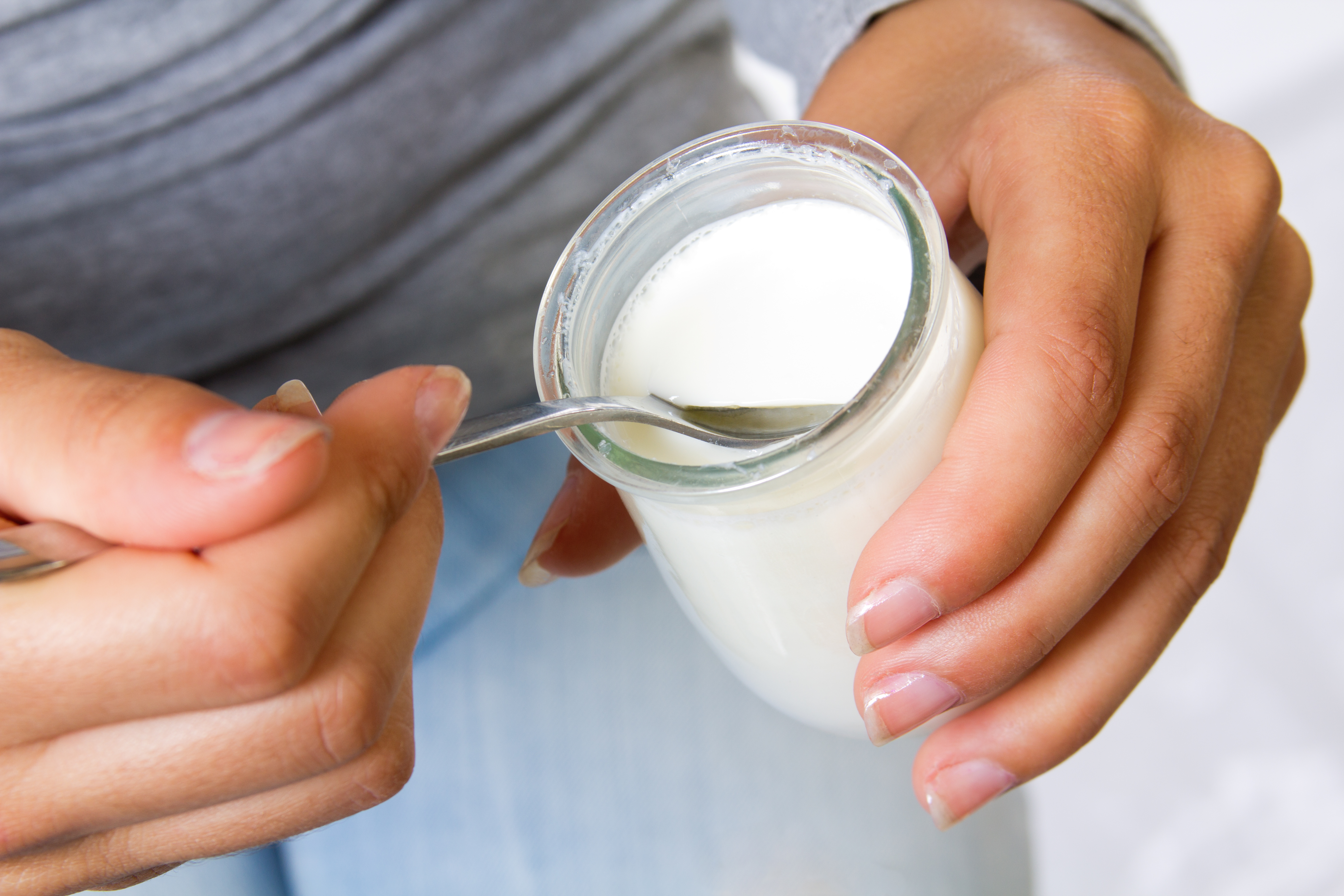Abstract
Produced through the fermentation of a mixed culture of the microorganisms Lactobacillus bulgaricus and Streptococcus thermophilus, yogurt is a dairy derivative that has its own sensory and physicochemical characteristics, it can be classified as a thick, white and slightly acidic liquid, being one of the foods most consumed by the world population today. For eating habits, they have great relevance as they present essential nutrients for human well-being. Considering its growing importance in the national market, large-scale production requires very well-founded techniques to guarantee its productive and, later, analytical quality, thus resulting in a finished product without microbiological, sensory or physical interferences. It is also necessary to ensure good origin of raw materials and packaging material. Therefore, the satisfaction of the final consumer will only be a consequence of good habits linked to the adequate production processes of the dairy derivative. The yogurt market potential in Brazil is great, as the search for a healthier diet is the main driver that leverages its trade. Thus, the present work aimed to review and understand the production, characteristics and trade of yogurts in Brazil. To this end, a descriptive research was carried out, based on literary reviews by consulting databases, articles, periodicals and current legislation on the proposed subject. In this way, the production of yogurt and its characteristics was evidenced, highlighting the importance of guaranteeing the quality of its production process, until its own consumption, where it has become a significant segment within the Brazilian food sector.
References
BRASIL. Ministério da Agricultura, Pecuária e Abastecimento. Instrução Normativa nº 46, de 23 de outubro de 2007. Aprova o Regulamento Técnico de identidade e qualidade de leites fermentados. Brasília, DF, 2007. Disponível em: https://pesquisa.in.gov.br/imprensa/jsp/visualiza/index.jsp?data=24/10/2007&jornal=1&pagina=4&totalArquivos=96. Acesso em: 21 maio 2023.
BRASIL. Ministério da Agricultura, Pecuária e Abastecimento. Instrução normativa nº 76, de 26 de novembro de 2018. Regulamentos Técnicos que fixam a identidade e as características de qualidade que devem apresentar o leite cru refrigerado, o leite pasteurizado e o leite pasteurizado tipo A. Brasília, DF, 2018. Disponível em: https://www.in.gov.br/materia/-/asset_publisher/Kujrw0TZC2Mb/content/id/52750137/do1-2018-11-30-instrucao-normativa-n-76-de-26-de-novembro-de-2018-52749894IN%2076. Acesso em: 21 maio 2023.
BRASIL. Ministérios da Agricultura e do Comércio e Turismo. Diário da República n.º 169/1992. Portaria 742/92, de 24 de julho de 1992. Estabelece regras sobre a produção, comercialização e consumo de iogurte e de leites fermentados. Brasília, DF: DRE, 1992. Disponível em: https://dre.pt/dre/detalhe/portaria/742-1992-292747. Acesso em: 21 maio 2023.
BOLINI, H. M. A.; MORAES, P. C. T. Tese mostra que análise sensorial incrementaria produção de iogurte. Jornal da Unicamp, Campinas, ed. 253, p. 11. 24-30 maio 2004. Disponível em: https://www.unicamp.br/unicamp/unicamp_hoje/jornalPDF/ju253pag11.pdf. Acesso em: 21 maio 2023.
CARNEIRO, C. S. et al. Leites fermentados: histórico, composição, características físico-químicas, tecnologia de processamento e defeitos. PUBVET, Londrina, v. 6, n. 27, ed. 214, art. 1424, 2012. Disponível em: https://www.pubvet.com.br/uploads/c13748843820239654f9d6caafc4bd37.pdf. Acesso em: 21 maio 2023.
DEMIATE, I. M.; OETTERER, M.; WOSIACKI, G. A fermentação como processo de enriquecimento nutricional. Boletim da Sociedade Brasileira de Ciência e Tecnologia de Alimentos, v. 28, n. 2, p.170-181, 1994.
FERNANDES, S. S. Monitoramento da microbiota de Iogurtes comerciais. 2011. p. 40. Dissertação (Mestrado em Ciência e Tecnologia de Alimentos) – Instituto de Tecnologia, Departamento de Tecnologia de Alimentos, Universidade Federal Rural do Rio de Janeiro, Seropédica, RJ, 2011. Disponível em: https://tede.ufrrj.br/jspui/handle/jspui/1240. Acesso em: 21 maio 2023.
FUJIHARA, B. T. et al. Produção do Iogurte, SP. In: II SIMPÓSIO DE ASSISTÊNCIA FARMACÊUTICA, 24 maio 2014, São Paulo. Anais […]. São Paulo: Centro Universitário São Camilo, 2014. Disponível em: http://www.saocamilo-sp.br/novo/eventos-noticias/saf/resumo-25.pdf. Acesso em: 21 maio 2023.
GONZALEZ, N. J.; ADHIKARI, K.; SANCHO-MADRIZ, M. F. Sensory characteristics of peach-flavored yogurt drinks containing prebiotics and synbiotics. LWT – Food Science and Technology, v. 44, issue 1, p. 158-163, 2011. Disponível em: https://www.sciencedirect.com/science/article/pii/S0023643810002252. Acesso em: 21 maio 2023.
LOURENS-HATTINGH, A.; VILJOEN, B. C. Yogurt as probiotic carrier food. International Dairy Journal, v. 11, issues 1–2, p. 1-17, 2001. Disponível em: https://www.sciencedirect.com/science/article/abs/pii/S095869460100036X?via%3Dihub. Acesso em: 21 maio 2023.
NASCIMENTO, A. A. I.; FONTANA, D. C. Processo de industrialização de iogurtes com adição da geleia de morango de forma contínua e descontínua e sua influência na viscosidade do iogurte final, comparando com marcas existentes na região de Ponta Grossa. 2012. Trabalho de Conclusão de Curso – Universidade Tecnológica Federal do Paraná, Ponta Grossa, 2012. Disponível em: http://repositorio.utfpr.edu.br/jspui/handle/1/16622. Acesso em: 21 maio 2023.
ROBERT, N. F. Fabricação de iogurtes: processos de produção de iogurte. Serviço Brasileiro de Respostas Técnicas. Rede de Tecnologia do Rio de Janeiro – REDETEC. Dossiê Técnico, jul. 2008, edição atualizada em set. 2021. Disponível em: http://www.sbrt.ibict.br/dossie-tecnico/downloadsDT/MzIw. Acesso em: 21 maio 2023.
SIEBRA, B. C. Aumento da eficiência em uma linha de produção de iogurtes. 2018. Trabalho de Conclusão de Curso – Universidade Federal do Ceará, Fortaleza, 2018. Disponível em: http://www.repositorio.ufc.br/handle/riufc/35186. Acesso em: 21 maio 2023.
SILVA, I. C. S. da; PANDOLFI, M. A. C. Análise das principais tendências no mercado brasileiro de iogurtes. Revista Interface Tecnológica, São Paulo, v. 17, n. 2, p. 523-534 2020. Disponível em: https://revista.fatectq.edu.br/interfacetecnologica/article/view/899. Acesso em: 21 maio 2023.
TREMBLAY, A.; PANAHI, S. Yogurt Consumption as a Signature of a Healthy Diet and Lifestyle. The Journal of Nutrition, v. 147, n. 7, p. 1476S-1480S, jul. 2017. DOI 10.3945/jn.116.245522. Disponível em: https://academic.oup.com/jn/article/147/7/1476S/4743669?login=false. Acesso em: 21 maio 2023.

This work is licensed under a Creative Commons Attribution-NonCommercial 4.0 International License.
Copyright (c) 2023 Maria Olimpia Pereira Sereia, Tayná de Lima, Cléber Rogeres de Andrades
